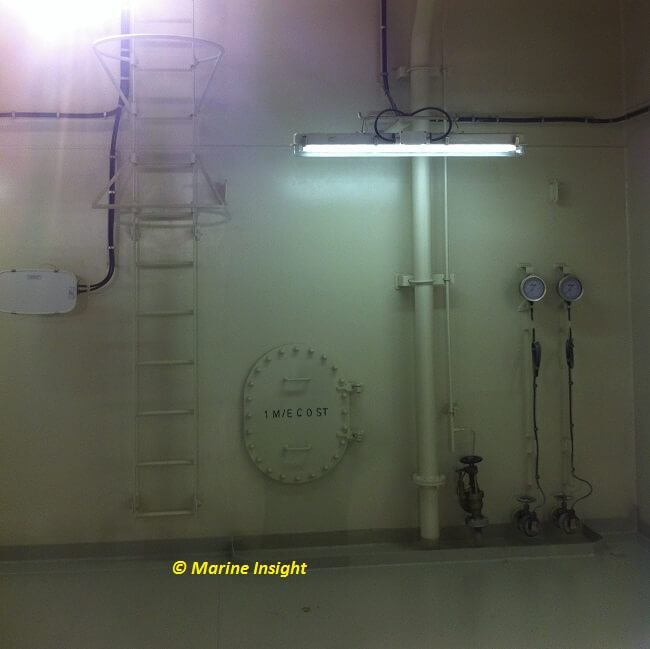

Ships use heavy fuel oil which has a very high viscosity. When stored in fuel tanks, this oil tends to stick inside the tanks forming layers of semi-solid substance. Moreover, many impurities of the oil settle down and stick to the surface of the tanks. It is therefore imperative that the fuel oil tanks are cleaned on a regular basis on ships.
Generally, fuel oil tanks cleaning on the ship is done during dry dock and whenever the inspection of the fuel tanks is due. Cleaning is done for surveyor inspection or if there is any work to be done inside the tanks such as crack in fuel tank, leaking steam lines etc.
For cleaning a tank various safety precautions are to be considered as it contains flammable gases and oil inside it.


Preparations Done before Cleaning
The following steps are to be followed before starting the cleaning process:
1) Empty the tank as much as possible; strip the tank by trimming the ship forward or aft depending on the suction valve location.
2) When the ship is going for dry-dock the keel plan is to be sent to the shore facility so that they should not put any keel block in the way of the plug present in the bottom shell plating.
3) The tank has to be properly ventilated as it is an enclosed space and might contain flammable gases.
4) It is to be made sure that the steam connections are closed and proper signs and placards are displayed so that during cleaning nobody opens the valve and gets burnt or hurt.
5) The tank has to be checked for flammable gases.
6) The tank has to be checked for oxygen content with the help of oxygen analyser.
7) The tank is drained off left over oil with the help of plugs.
8 ) The location of plug can be found out in shell plating diagrams.
9) Generally this plug is covered with cement and made streamlined with the shell plating.
10) Enclosed space entry checklist is filled out so that no safety issues are compromised or left.
During cleaning
1) Entry is only to be made inside the tank if the oxygen level is 21% by volume and flammable gases are vented out.
2) One person should always standby outside the manhole door and should be in communication with the person inside.
3) The person outside should continuously communicate with person inside and with the duty officer.
4) In case of hot work to be carried out, a fire line is to be carried inside. Also, a small fire extinguisher for small fire should be there. Inform Port state authority before commencing hot work.
5) The tank is cleaned manually with the help of brushes, rags etc.
6) The oxygen content is continuously monitored and in case the alarm indicates low level, the space has to be evacuated immediately without any delay.
After cleaning
1) Make sure no tool are left inside which may get stuck in the valve or damage the transfer pump
2) The place where crack repair is done should be checked for leaks.
3) If it was a steam leak repair, the coils needs to be checked for steam leak inside.
4) In case of crack or plate renewal the tank has to be pressure tested and checked for leak. If the repair is major it has to be inspected by class surveyor before putting it in operation.
5) Close the manhole after inspection, repairs and cleaning.
6) Close and remove the sign – permit to work.
Do you think we missed out a point? Let us know in comments.










We believe that knowledge is power, and we’re committed to empowering our readers with the information and resources they need to succeed in the merchant navy industry.
Whether you’re looking for advice on career planning, news and analysis, or just want to connect with other aspiring merchant navy applicants, The Marine Learners is the place to be.